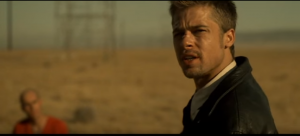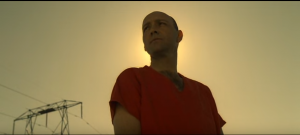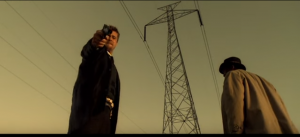Music Video for Anxiety by Mollusc
https://www.youtube.com/watch?v=uco_wDitX40&feature=youtu.be
The final cut of our music video is complete. It’s been very useful to go through the process of creating a music video from the conception of the idea, pre-production, production and post. It’s interesting how many little things we changed along the way from the original plan. However the core of our final cut of Anxiety remains true to the video we set out to create in week one.
There are many ideas that never came to fruition for our music video whether it be for practical reasons or simply a change of mind. Originally we planned to incorporate slow-motion paired with long black fabrics and clouds of coloured powders. I’m not sure why we didn’t get around to using the fabric as I feel like it would have spiced up the video a bit. However, we chose not to use the coloured powders as it was going to be too messy in the studio. So along the way we ditched a few ideas but they were always replaced with something else. For instance, Andrea’s cameo appearance wasn’t really planned.
Like all projects we came across a few difficulties and made mistakes but this is to be expected. Its easy to look back at a project you’ve spend so much time on and pick out things you wish you could change. There are a few elements of the final music video that don’t work as well as they could. For instance, the white backdrop pictured below is distracting when majority of the video is dark and they are intercut quickly. 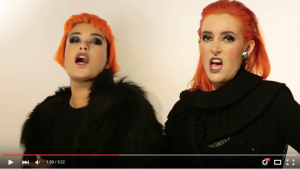
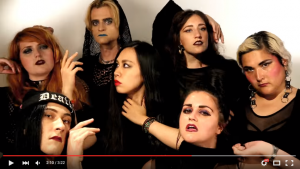
I feel similarly about the tableau shot which also has a white backdrop. It would look a lot more dark and mysterious with a black background. Although I think the real problem with this shot is how static it is. This is our fault, we should of offered more stage direction to the extras and given them choreographer moves to do, rather than have them idling awkwardly. Lastly, One of the shots of Emma and Mo singing has noticeably harsh lighting. Its quite distracting and somewhat unflattering and when cut quickly with the other shots it ruins the continuity and visual appeal. Actually some of my prefered shots are underlit if anything. For instance this image below in the woods, detail has been lost in Emma’s face and the whole image is a bit grainy but I like the style. Its mysterious. 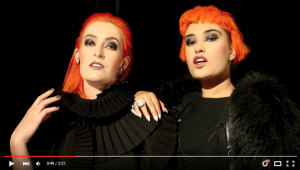
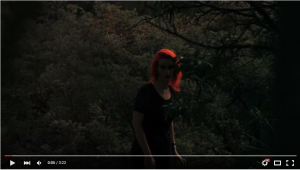
On the other hand there are countless things I am very happy with in terms of our video. I give props to Andrea for her fast paced on the beat editing that retains the video’s momentum. I love some of the overlay effects she did for instance the transparent editing of the leaves below. Its kind of odd with the green against the orange but I am surprised how good it looks. Furthermore the blurred overlay of the extras and the leads created a spooky Gaussian blur type effect. It really added to the witchy feel.
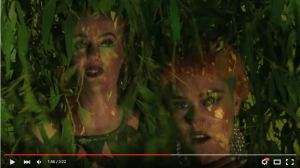
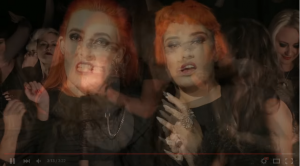
As I’ve said before one of my favourite shots is the projection of the warm torch-lit leaves on the leads faces. I’m very pleased with how this shot ended up turning out in the final cut. Especially with the warm torch light acompying the bright orange hair of Emma and Mo. I was also quite happy with how the extras dance sequence turned out and how it was intercut amongst the whole video.
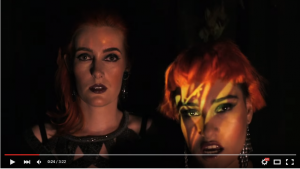
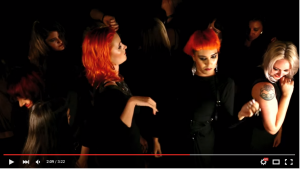
We have worked hard on this video and I think the final product is reflective of that. I think we are all very happy with how it turned out. It was a pleasure to work with such a fine group and I hope they all do well on future projects. Also thanks for the great semester Rohan, have a good one.
Over and out for the last time summer school,
Luke

